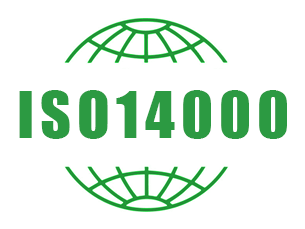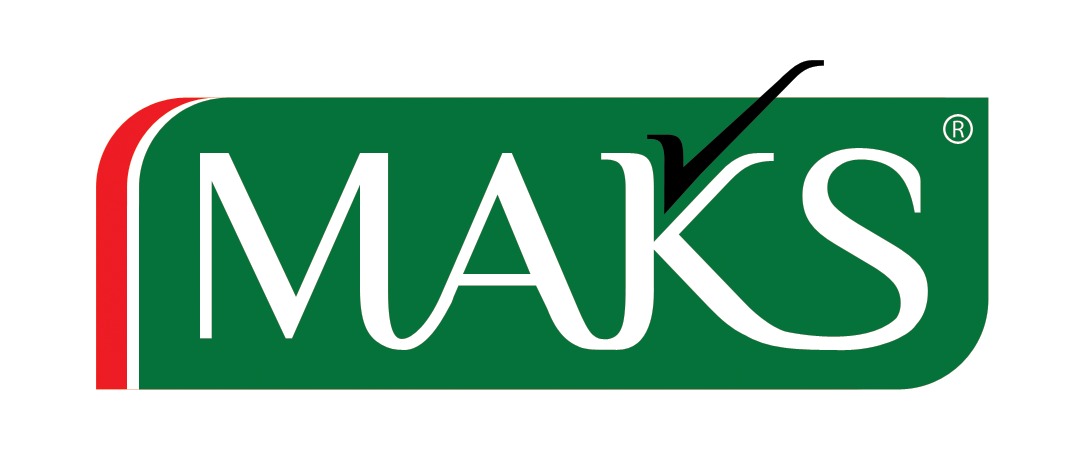
ISO14000 series of standards Background and Introduction
ISO14000 series of standards on environmental protection management standards developed by ISO International Organization for Standardization , the degree of attention it generates history and global environmental issues as well as the deterioration of the world environment organization inseparable.
20th century there have been a total of ten human pollution hazards incident to make a large number of residents of unnatural deaths , resulting in global environmental issues become increasingly prominent. In 1987, Norway made in environmental protection , ” Our Common Future ” report, the first use of “sustainable development” point of view. In 1992 the United Nations convened in Rio de Janeiro, Brazil, “Environment and Development ” Conference adopted Agenda 21 , proposed a ” human harmony with nature , enjoy the right to a healthy and full of the fruits of production ,” the concept of environmental protection . Various fields worldwide , especially the business community who gradually realize sustainable development and environmental protection is the duty and responsibility of their due . Therefore , the establishment of “pollution prevention” new ideas , to enable enterprises to gradually self-determination , self-control, self-management approach has become a new trend. Period, many new management tools are used, such as ” life-cycle ” approach , research products from the “cradle to grave” environmental issues and environmental impact . Meanwhile, some developed countries gradually to international environmental protection as a precondition , a new trade protection conditions for world trade and gradually formed a non-technical unequal green barriers , causing some do not meet certain environmental conditions of enterprises not enter international trade markets.
Thus , the development of a ( series ) has a globally recognized management standards on environmental protection has become a very urgent development needs . The ISO: non-governmental in nature (International Standard Organization ISO abbreviation ) this very high degree of international recognition , specifically the development of international standards on civil society organizations to play this important task has become the most suitable .
June 1993 ISO International Organization for Standardization Technical Committee established ISO/TC207 environmental management . And draws on the experience of the following criteria on the basis of the development of the ISO14000 series of standards . Environmental Management Technical Committee TC207 successfully draws : British BS7750-“BS7750 environmental management system standard” ; EU EMAS-” eco- management and audit rules ,” and ISO9000-” Quality management and quality assurance ,” prepared on the basis of standard ISO14000 environmental management standards . And in September 1996 issued the first batch of ISO14000 series of standards 5 . ISO Central Secretariat of Environmental Management Technical Committee TC207 reserved Standard No. 100 , the standard label for the ISO14001 ~ ISO14100, ISO14000 series of standards collectively known as . There TC207 next six sub-technical committee responsible for the formulation of appropriate standards , the distribution of its standard number in the following table :
| Sub-technical committee or working group | Task | Standard No. |
| SC1 | Environmental Management System (EMS) | 14001-14009 |
| SC2 | Environmental Audit (EA) | 14010-14019 |
| SC3 | Environmental labeling (EL) | 14020-14029 |
| SC4 | Environmental Performance Evaluation (EPE) | 14030-14039 |
| SC5 | Life Cycle Assessment (LCA) | 14040-14049 |
| SC6 | Terms and definitions (TQD) | 14050-14059 |
| ( Working Group ) WG1 | Environmental factors in product standards | 14060 |
| Spare | 14061-14100 |
Country in May 1995 formally established the China ‘s “National Environmental Management Standardization Technical Committee ” CSBTS/TC207. In the ISO standardization organizations announced the first batch of environmental management standards in September 1996 , shortly after our country will be equivalent to the five international standards conversion , and in April 1, 1997 promulgated by the State Bureau of Technical Supervision as a national standard , another number to GB/T24000 series. ISO14000 series of standards are these five : ISO14001, ISO14004, ISO14010, ISO14011, ISO14012.
Among them, the leading standard ISO14001 Environmental Management Systems – Specification with guidance for use , it is the only real basis for the audit standards and certification for businesses , so we usually talk about the ISO14000 environmental management system standard refers to this standard . ISO14001 standards promulgated since September 1996 has been revised for the first time in 2004 , ISO14000 certification standards that are currently in use : GB/T24001: 2004 idt ISO14001: 2004 version.
Describe the scope of the ISO14001 standard
a) ISO14001 standard is applicable to any type of tissue products . Product categories include hardware, software , processes, materials and services , and any type of tissue products may establish an environmental management system according to ISO14001 standards.
b) ISO14001 standard for any size organization. Organizations can be divided according to the size of large organizations and small and medium sized organizations , on the same type of products, environmental factors generally more complicated than large organizations , small and medium sized organizations environmental factors is relatively simple , but can be any size organization establishment of environmental management system according to ISO14001 standards.
c) ISO14001 environmental performance standards applicable to any organization . This standard does not propose specific environmental performance requirements , only requires a commitment in principle in compliance with applicable legal requirements and other requirements to be observed , as well as pollution prevention and continuous improvement. As for the content , such as specific environmental emission standards, the level of pollution control technology does not provide . Organizations according to their level of existing pollution control , environmental performance and other conditions existing commitment to comply with the laws , regulations and other requirements , and to evaluate its compliance and take corrective measures do not meet the continuous improvement of the environmental performance of the organization. Thus , with different levels of pollution control , organizational performance in different environments , can meet the requirements of this standard .
d) ISO14001 standard is applicable to any organization geographical, cultural and social conditions . The original purpose of the standards is to prevent trade barriers to developing countries, regardless of the organization or organizations in developed countries ; whether the organization has advanced culture, organizational or management is relatively backward ; whether the organization is in the Eastern Hemisphere , or organization in the Western Hemisphere ; Just having the desire , can implement this standard :
– Establish, implement , maintain and improve an environmental management system ;
– Assure itself of compliance with environmental policy ;
– Through self-evaluation and self-declaration , seeking organizations interested parties ( such as customers ) to confirm their conformity , seeking confirmation of its self- declared external , external organizations seeking certification ( or registration ) for its environmental management system , etc. confirm compliance with this standard .

ISO9000 is a series of standards on quality management system International Organization for Standardization (ISO) issued. To implement its corporate quality policy must establish effective operation of the quality system, through the quality of the ring analysis to identify the technical, managerial and human factors that affect product / service, and make the established quality system is always in controlled state to reduce, eliminate or prevent quality defects, guaranteed to meet customers’ needs and expectations. The series of standards from the perspective of standardization and versatility reflects the ideas and principles of total quality management, represents the most advanced modern quality management thinking.ISO9000 certification has internal and external two advantages: can strengthen internal management, improve the quality of personnel and corporate culture; external enhance corporate image and market share. Details are as follows:
First, strengthening quality management, improve enterprise efficiency; enhance customer confidence, expand market share
Responsible for the certification of ISO9000 quality system certification bodies are the national accreditation body recognized authority on corporate quality system audit is very strict. Thus, for the enterprise, it can be scrutinized in accordance with international standard quality system for quality management, thereby achieving the rule of law, scientific requirements, greatly improve work efficiency and product qualification rate, rapid increase in economic efficiency of enterprises and social benefits. For outside the enterprise, when customers learned that the supplier be managed in accordance with international standards, to get the ISO9000 quality system certification, and there are strict audit and regular monitoring of certification bodies, they can be sure that the company is able to consistently provide qualified products or services to safely enter into supply contracts with companies to expand their market share. We can say that in these two areas have received immediate effect.
Second, get a green card in international trade – “pass” to eliminate barriers to international trade
Many countries in order to protect their own interests, set all sorts of barriers, including tariff and non-tariff barriers. Non-tariff barriers which are mainly technical barriers, technical barriers, and mainly product quality certification and ISO9000 quality system certification barriers. In particular, the “WTO” mutually exclusive tariff barriers among member states, can only be set technical barriers, therefore, is the main way to get certified to eliminate trade barriers. After China’s “WTO” lost distinguish between domestic and international trade in the strict boundaries of all trade barriers are likely to encounter these technologies, which should attract the business community attaches great importance to early prevention.
Third, saving energy and cost audits second party
In modern business practice, has long been the practice of the second party audit, and gradually found its existence is a serious shortcoming: an organization usually available for many customers, the second party audit organization will no doubt bring a heavy burden; another On the one hand, customers also need to pay a substantial fee, but also consider the experience and level of questions sent or servants, otherwise spent costs are expected to reach the goal. ISO9000 certification can only exclude such drawbacks. Because, as the first party to apply a third-party certification and obtained ISO9000 certification in the future, many second party would not be necessary for first-party audit, so whether it is a first party or second party can save a lot of effort or expense. Also, if the business after obtaining the ISO9000 certification, and then apply for UL, CE and other product quality certification, certification bodies can also be exempted from the enterprise quality management system certification duplicate expenses.
Fourth, competition in product quality and remain invincible
The main means of international trade competition is price competition and quality competition. Due to low sales approach not only makes profits dropped, if it constitutes dumping, will be subject to trade sanctions, so the price competition means more and more desirable. Since the 1970s, the quality of competition has become the primary means of international trade competition, many countries to improve the quality of imported goods into the requirements of important measures to limit Award as the trade protectionism. Implementation of ISO9000 international standard quality management, improve product quality can be stabilized, so that enterprises in product quality competition and remain invincible.
V. beneficial economic cooperation and technical exchanges between international
In accordance with international economic cooperation and technical exchanges practices, quality of cooperation must have a common language in the product (including service), unified understanding and co-defensive norms in order to carry out cooperation and exchanges. ISO9000 quality management system certification provides just such a trust is conducive to rapid agreement on both sides.
Sixth, strengthen internal management, stable business operations, reduce technical or quality fluctuations caused by employees resign.
Seven, improving corporate image.
